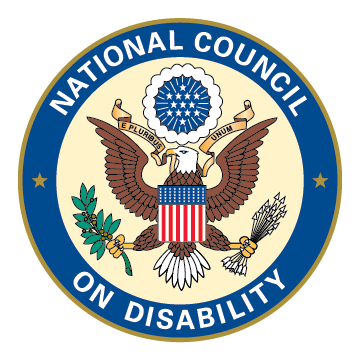Forty Years After The Willowbrook Consent Decree, NCD Celebrates How Far We’ve Come
Forty years ago on May 5, 1975 New York Governor Hugh L. Carey signed the Consent Decree that ended the legal battle to improve conditions at the Willowbrook State School in Staten Island, NY. The institution closed in 1987 due to public outcry and changing expectations.1
After initially being used as a WWII prisoner of war institution, the Willowbrook State School was a tax-payer funded facility built to accommodate 4000 people. At its peak in 1969, the facility warehoused over 6200 people with intellectual and psychiatric disabilities making it the largest state-run institution for people with mental disabilities in the United States.2
Chronically understaffed, overcrowded and underfunded, the horrific conditions at Willowbrook prompted Sen. Robert Kennedy to call the institution a “snake pit” in 1965 echoing the conditions depicted in the 1948 feature film of the same name starring Olivia de Havilland. But unlike the film, Willowbrook was no fiction. Kennedy described the rooms inhabited by disabled children as “…less comfortable and cheerful than the cages in which we put animals in a zoo.”3
Kennedy’s visit and subsequent commentary placed Willowbrook in the national spotlight and forced embarrassed NY state officials to develop a five-year improvement plan. Sadly, after making minor initial adjustments, conditions at the institution reverted back to the inhumane conditions which originally placed it under public and legislative scrutiny. 4
This was evidenced in 1972, when a young investigative reporter at an ABC affiliate in NY named Geraldo Rivera once again shamed the conditions at Willowbrook with a damning television exposé that was, this time, watched by millions. Rivera’s report titled “Willowbrook: The Last Disgrace” exposed the institution’s serious overcrowding, dehumanizing practices, dangerous conditions and regular abuse of residents. Outraged yet again, this time parent advocacy groups took their grievances all the way to federal court.
Parents of Willowbrook residents filed a class action suit in U.S. District Court for the Eastern District of New York on March 17, 1972. The lawsuit alleged that conditions at Willowbrook violated the constitutional rights of their children.
Although the Consent Decree did not require complete closure of the facility, it established that residents of Willowbrook had a constitutional right to be protected from harm and required NY state to take immediate steps to improve the lives of those who lived there and to “ready each resident…for life in the community at large” and called for the placement of Willowbrook residents in the “least restrictive and most normal living conditions possible.” These included making sure residents were provided with basic necessities like clothing, and given opportunities to leave their beds, interact with the community, and be provided with therapy and vocational services.
Perhaps most importantly, as a direct result of the decree authorities were required to develop a range of community placement options for most residents and to downsize to no more than 250 residents within 6 years. While they didn’t make the deadline, Willowbrook eventually closed in 1987 before being rehabilitated to become what it is today, the Staten Island campus of the City University of New York.
The shift in public awareness over conditions at large state-run institutions for individuals with intellectual and developmental disabilities not only lead to victories such as the Willowbrook Consent Decree and the subsequent closure of the facility, such heightened awareness was also critical to the passage of that sparked the adoption of landmark federal civil rights legislation protecting people with disabilities – including the Protection and Advocacy System as outlined in the Developmental Disabilities Assistance and Bill of Rights Act of 1975, the Education For All Handicapped Children Act, also passed in 1975, and the Civil Rights of Institutionalized Persons Act of 1980. These laws were the among the earliest building blocks federal civil rights legislation protecting people with disabilities, and leading eventually to the Americans with Disabilities Act (ADA) being passed in 1990, and subsequent Olmstead decision which affirmed that unnecessary segregation was a violation of the ADA.5
The shameful legacy of Willowbrook guided a generation of policymakers and advocates to the profound recognition that to really and truly be free from harm, individuals with disabilities must be provided with services in the least restrictive environment that meets their needs, in places that most look, feel and operate, well, like home.
Updating and affirming the decision made four decades earlier, NCD’s 2015 report, Home and Community-Based Services: Creating Systems for Success at Home, at Work and in the Community, NCD found that “…greater individual choice, satisfaction, housing stability, and higher levels of adaptive behavior and community participation associated with living in residential settings of smaller size.” 6
Similarly, Centers for Medicare & Medicaid Services (CMS) regulations finalized in 2014 specify the quality, nature and characteristics of settings that may be considered “home and community-based.”7
On this, the 40th anniversary of the signing of Willowbrook Consent Decree, NCD applauds the legacy of the decision, an important first step in the long legal journey towards a place to call home for people with intellectual and developmental disabilities.
Perhaps the best way to learn from the past is to remember and celebrate just how far we’ve come from Willowbrook.
-——————-
1 Minnesota Governor’s Council on Developmental Disabilities, Milestones in OMRDD’s History Related to Willowbrook http://mn.gov/mnddc/extra/wbrook/wbrook-timeline.htm
2 See NYSARC, Inc. Observes 40th Anniversary of Willowbrook Consent Judgment athttp://www.nysarc.org/index.php?cID=251 Retrieved April 30, 2015.
3 Staff “Excerpts From Statement by Kennedy”, The New York Times, September 10, 1965.
4Disability Justice, The Closing of Willowbrook, at http://disabilityjustice.org/the-closing-of-willowbrook/ Retrieved April 30, 2015.
5 Olmstead v. L.C. 1999. 527 U.S. 581.
6 National Council on Disability. 2015, February 25. Home and Community-Based Services: Creating Systems for Success at Home, at Work and in the Community. Washington DC: National Council on Disability. /publications/2015/02242015/
7 U.S. Department of Health and Human Services, 42 CFR Parts 430, 431,et al., Final Rule, accessed February 2015
http://www.gpo.gov/fdsys/pkg/FR-2014-01-16/html/2014-00487.htm.

